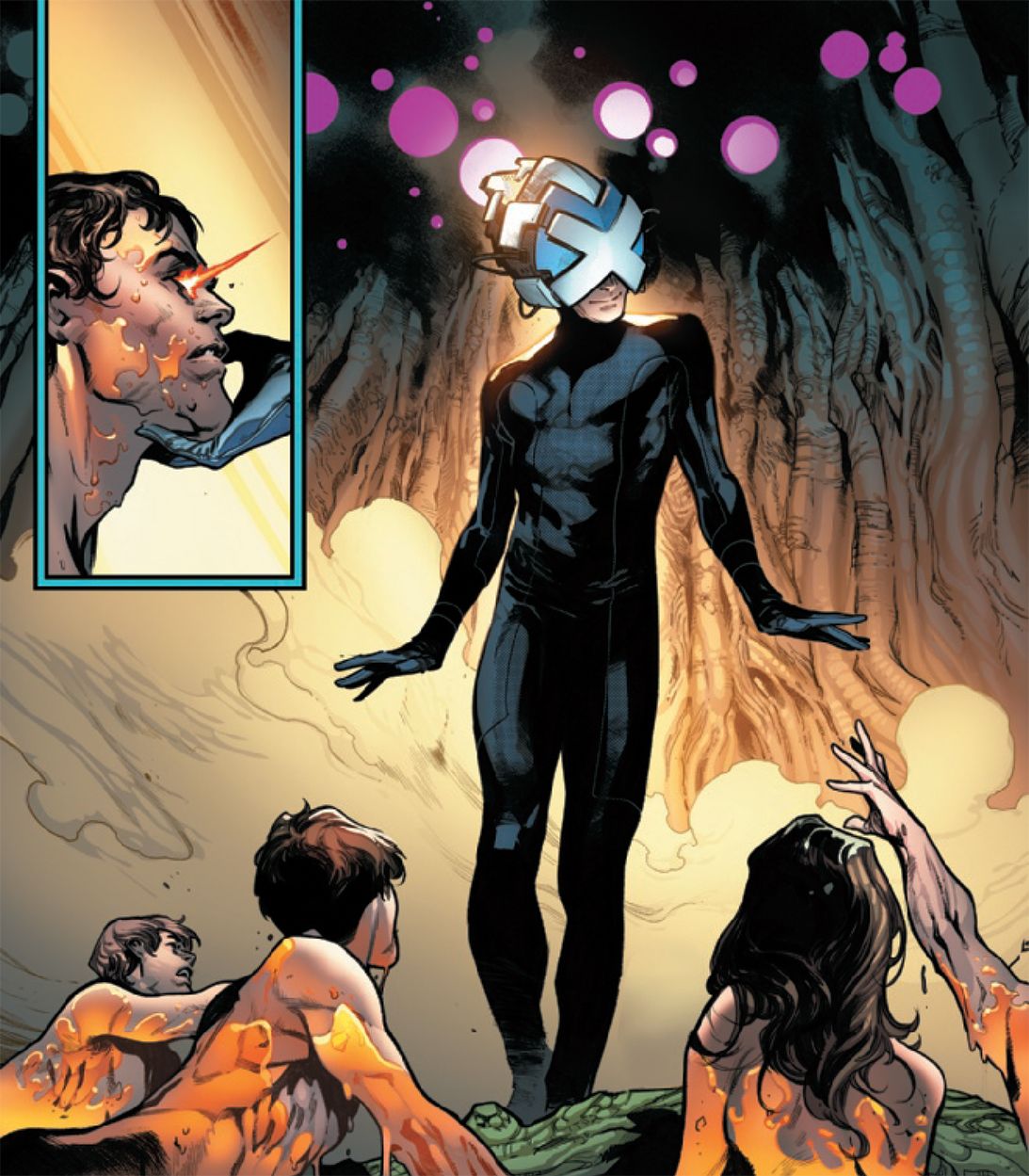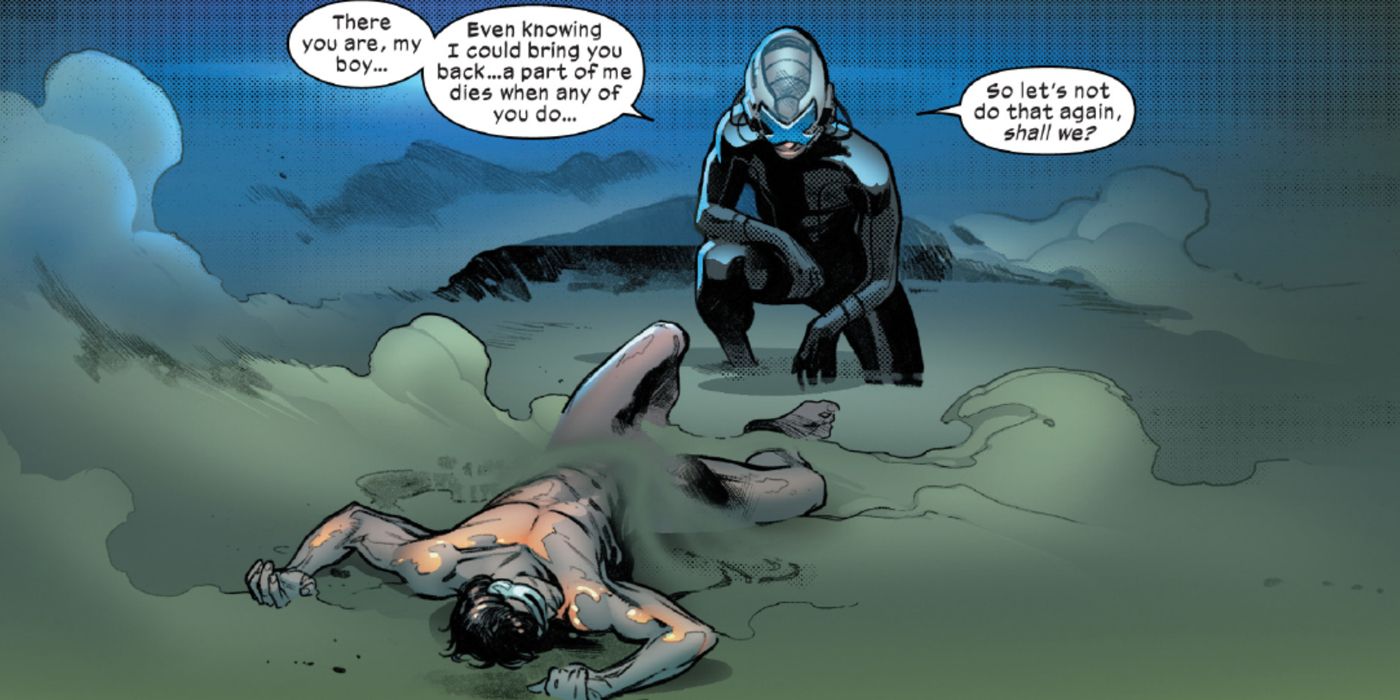Warning: The following contains major spoilers for House of X #5, by Jonathan Hickman, Pepe Larraz, Marte Gracia, VC's Clayton Cowles and Tom Muller, on sale now.
Marvel Comics has had an extensive history of employing clones throughout its stories, often as a means to resurrect deceased character or reimagine existing characters in interesting ways through identical doppelgängers. Perhaps most closely associated with Spider-Man, other Marvel titles have prominently utilized clones including the X-Men. This trend continues in the latest issue of House of X by Jonathan Hickman and Pepe Larraz, but it does so in a fresh, innovative manner that not only organically incorporates the tried-and-true trope but also has grave implications for both the X-Men and Marvel Universe as a whole.
Picking up from the shocking ending of House of X #4, the X-Men who sacrificed themselves to destroy Master Mold, a living Sentinel factory, were indeed killed but a devastated Xavier had long prepared for.
By combining their powers and DNA samples from Mister Sinister, Goldballs, Proteus, and Elixir create eggs carrying the same genetic material as their fallen comrades. The time-manipulating mutant Tempus then ages the growing embryos to the same relative age they were when they were killed while Hope Summers supervises the whole process, using her powers to amplify her fellow mutants abilities as they resurrect the fallen. As the newborn mutants hatch from their eggs -- a mysterious image first seen in House of X #1 -- Xavier completes the cloning process by revealing the true nature of Cerebro.
RELATED: Dawn of X Kicks Off Marvel's Next Mutant Era with a Teaser
Ever since its debut, Xavier had used Cerebro to locate mutants through their minds and X-gene. In House of X #5, Xavier reveals that Cerebro also stores everyone's mental pattern into its memory, allowing Xavier to then transfer the old memories and brain waves into the newborn clones. Storm then quizzes each of the mutants on their personality and memory to ensure the mind transfer is a success before welcoming back among the community of Krakoa.
This revelation opens several major questions about the nature of clones in the X-Men mythos, especially how past incarnations have revisited the topic.
One of the biggest questions facing clones is whether they have their own soul and identity outside of their original genetic source material. Ben Reilly and Kane have had this debate as the clones of Peter Parker, Madelyne Pyror descended into villainy after learning she was a clone of Jean Grey, and -- perhaps the most notable clone in all of the X-Men -- Laura Kinney has struggled to find her own identity as a person and superhero apart from that of Wolverine, the source of her own DNA. The clones born on Krakoa have no time to process this; Xavier transfers the old memories into each of the bodies moments after they emerge from their respective eggs, serving solely as replacement bodies for the X-Men instead of as individuals.
One of the biggest X-Men villains, Mister Sinister, serves as a key figure in the Marvel's history of cloning, constantly replicating and experimenting genetic material to his own fiendish ends. The antagonist has often been seen employing his own private army of clones of himself plotting to rebuild the world in his image both ideologically and genetically. With Sinister as one of the villains welcomed by Xavier and Magneto to Krakoa, the new mutant nation's extensive use of cloning to ensure its key residents stay alive could lead to troubling developments.
Another morally ambiguous moment regarding the clones has Xavier strongly imply that this is far from the only time that the cloning process has been used to resurrect fallen X-Men, remarking that their loss is no less painful every time.
The trauma of enduring constant death and rebirth likely carries a heavy psychological toll as the mutants are constantly resurrected from -- as seen in House of X #4 -- truly, horrific death and dismemberment. A similar process turned Ben Reilly from the heroic Scarlet Spider to a maddened, villainous incarnation of the Jackal in the Spider-Man crossover event The Clone Conspiracy and has disturbing implications for the reborn X-Men should this line of traumatic death and resurrection continue.
In House of X, Jonathan Hickman and Pepe Larraz have essentially repositioned the idea of clones in the Marvel Universe has one that has definitively trumped the concept of death while raising morally ambiguous questions about Xavier and the X-Men's methodologies moving forward.
In order to give themselves a fighting chance against a world that hates and fears them, the mutants have not only founded their own nation, but developed a means to constantly be reborn after death. However, in doing so, Xavier may have set up darker developments to follow while inviting the X-Men villain most likely to pervert the process into his home.



